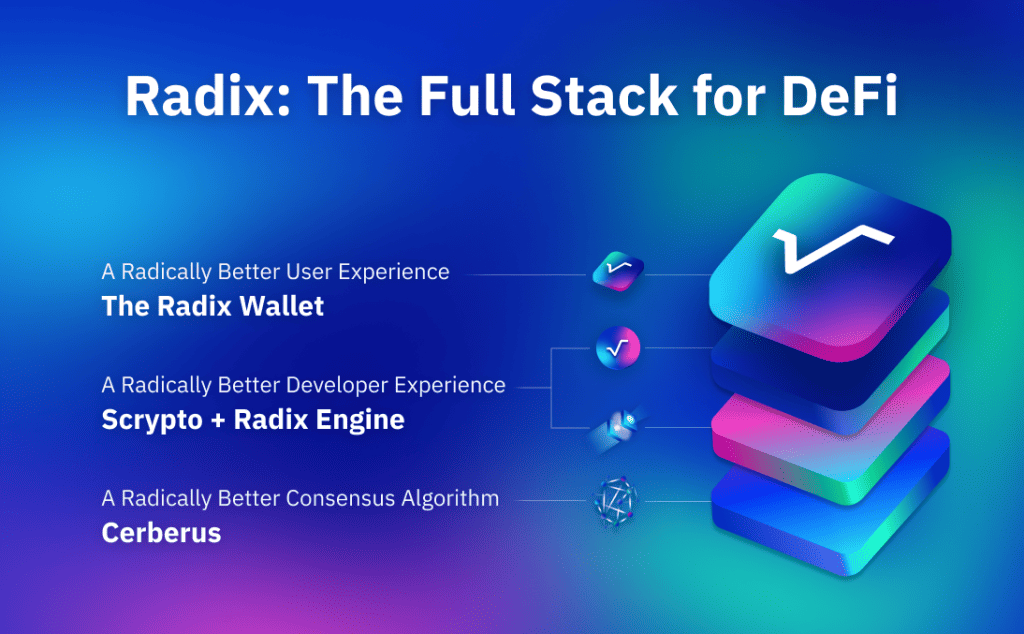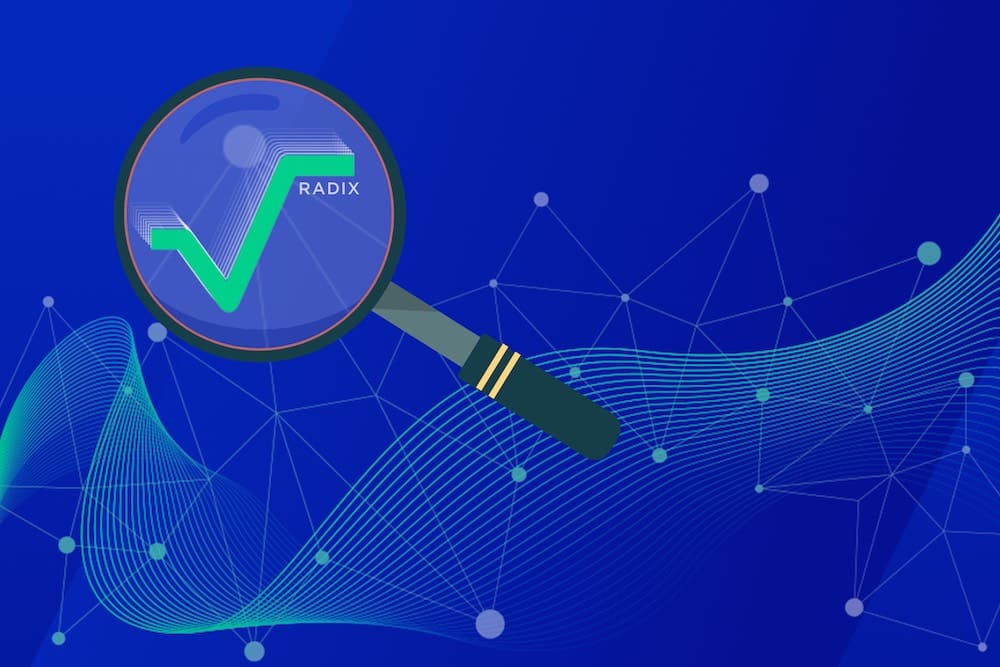What is Radix (XRD)? – How Does Radix Work?
Smart contract capable platforms have been playing a vital role in the mass adoption of blockchain technology. Still, they’re failing to attract a vast majority of developers due to composability issues. Most of these platforms experience congestion as the number of smart contracts increases.
Similarly, the developers are concerned about smart contract hacks due to which they avoid using these platforms. Radix (XRD) is one such platform that is designed to address the problems of developers and enterprises so they may truly take advantage of the blockchain space.
Key Takeaways: –
Radix provides inexpensive and scalable transactions on a global network, making it suitable for large-scale adoption of the DeFi ecosystem.
It offers near-instant finality and a high level of composability, making it an attractive option for developers to build decentralized applications.
Radix employs a two-layered protocol with a Relay Chain that records transactions and Parachains that offer independent scalability.
What is Radix (XRD)?

Radix is a layer-1 protocol designed to provide a scalable and secure execution environment for developers and enterprises. The platform is dedicated to supporting the mass adoption of blockchain technology while providing tons of opportunities for the Internet of Things (IoT).
The developers can build highly secure and efficient distributed applications for both public and private networks. Radix offers inexpensive and scalable transactions with its global network.
Radix is a more suitable option for the large-scale adoption of the DeFi ecosystem because it offers near-instant finality and a high level of composability that isn’t available on other platforms. Furthermore, Radix offers a set of high-quality templates/DeFi Lego bricks that developers can use to build decentralized applications.
The Radix team claims that it’s the only platform that can prevent smart contract exploits and hacks. Radix encourages developers to suggest new improvements for the protocol. Radix offers an innovative environment for developers where they can create next-generation smart contracts without worrying about code failures, hacks, and exploits.
Radix Brief History
Radix was initially introduced as eMunie by Dan Hughes in 2012. The project later evolved into Radix. Radix team was focused on providing a scalable blockchain platform that can better protect users’ interests. The Radix team introduced the Cerberus consensus in 2020 to provide unlimited linear scalability.
Scrypto was released in 2021 and the Olympia mainnet was also launched during this year. The team raised around $2.5 million during a seed round in 2018 and they again raised around $10 million during a seed round in 2023. Taavet Hinrikus, DWF Labs, and LocalGlobe are some of the leading investors that supported this project.
How Does Radix Work?
Radix employs a two-layered protocol to provide a scalable environment for DApp development.
- Relay Chain – Relay Chain is the primary chain that keeps a record of the transactions. It establishes a connection between the DApps built on the network.
- Parachains – Radix has a network of parachains built by developers. These parachains operate independently. Thus, they can offer incredible scalability.
Radix shares most of its features with Polkadot. The developers can test their projects in a live environment before moving them to Polkadot.
DeFi Lego Blocks

Radix offers a set of resources that developers can use to build new protocols or applications. They can also integrate these resources into their existing applications to boost their efficiency. Interoperability makes it easier for developers to build decentralized applications quickly and efficiently.
The developers don’t need to write the entire code from scratch. They can simply use the open-source code elements to build their DeFi applications. The platform provides a set of templates for decentralized marketplaces, exchanges, and polling applications.
Radix Engine
Radix Engine is primarily designed to build a strong developer community with its ‘self-incentivizing developer ecosystem’. Similarly, it plays a vital role in preventing smart contract hacks. The smart contracts are called components within the Radix network.
The developer royalty system is one of the most important features of Radix Engine as it incentivizes the developers for their contribution. Thus, it can help with building a thriving community of developers. This system is designed to build an automated decentralized autonomous marketplace for the network components.
Cerberus Consensus
Radix uses an innovative consensus protocol named after the three-headed dog in Greek mythology. With this consensus protocol. Radix can serve billions of users by automatically composing all transactions across multiple shards. Similarly, the network’s performance increases as more nodes join the network.
Components
Radix-based smart contracts are called Components. These smart contracts offer more reliable and consistent results compared to Ethereum-based smart contracts. Moreover, Components can be easily added to other applications. The developers need to use Scrypto, a programming language, to build Components.
This programming language is quite popular among DLT developers. The components is automatically added to the Component catalog before it is made public. The developers can explore this catalog to find the required Components for their applications. The developers can create multiple Components with the same parameters.
Radix Tokenomics
XRD is the native token of the Radix network that is used to pay transaction fees. The validators can also stake these tokens to participate in the transaction validation process. With a circulating supply of 1.2 billion tokens, Radix has a market cap of $568 million.
Conclusion
Radix (XRD) emerges as a promising layer-1 protocol, addressing the composability and security concerns faced by developers and enterprises in the blockchain space. With scalable transactions, DeFi Lego blocks, and a self-incentivizing developer ecosystem, Radix aims to support the widespread adoption of blockchain technology and foster a thriving community of developers.
If you need more information about how Radix works, feel free to get in touch with us. We also invite you to subscribe to our weekly newsletter if you need regular updates about Bitcoin and the crypto market.




